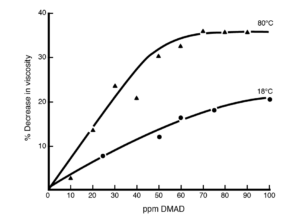Contact Us
Revolutionize Your Fuel Experience with DMAD – a superior and innovative fuel additive
DMAD: removes and helps prevent accumulations, reduces emissions
Residual fuel oils pose a host of challenges, from sludge formation to a mix of carbon particles, as well as tars and contaminants, accelerated by heating. In turn, resulting issues can include tank accumulation, strainer clogging, and increased soot and equipment coating with gums and varnishes. While corrosion naturally reduces metal lifespan, the high viscosity of heavy fuels, worsened by the trend toward higher viscosities, can negatively impact equipment performance.
Residual fuels can be corrosive
Corrosion is another problem with residual fuels. The water present in the oil, along with the salts and acids it contains, can corrode the tank, pipelines, preheaters, strainers and other metallic equipment contacted by the oil. The corrosive attack in turn contributes more contaminants to the oil. Also, it can severely reduce the useful life of the metal equipment.
DMAD helps to preserve your equipment
DMAD, a 100% active concentrate, is versatile in formulations to disperse deposits linked to residual fuel oils, especially heavy ones like Bunker C or No. 6 fuel oil. This organic, nonionic liquid exhibits exceptional penetrating, dispersing, peptizing and dissolving properties. When integrated into fuel oil additives, DMAD penetrates and disperses sludge-forming agglomerates, suspending most substances finely. This refined suspension is then efficiently pumped to burners, facilitating minimal deposit and plugging issues at fuel strainers and burner nozzles during combustion.
Enable the formulation of innovative fuel additives with Buckman DMAD
DMAD serves as a penetrant, dispersant and solvent. Its exceptional effectiveness has led to utilizing this versatile product as a conditioning treatment for residual fuel oils.
- Unmatched penetrant and dispersing properties on asphaltenes/paraffines
- Corrosion inhibition through dynamic film-barrier protection
- Innovative 85% biobased chemical, from vegetal sources
Corrosion defense for fuel systems
DMAD, when added during fuel tank filling, creates a protective film on metal surfaces, preventing gum, varnish and tar buildup. This film safeguards against corrosion, maintaining prolonged equipment efficiency and deterring extensive corrosion from exposure to corrosive materials.
DMAD’s dispersion of water in the fuel minimizes localized corrosion in the handling system. Additionally, it guards against corrosion in the furnace, particularly in the cold-end tube area and the stack. Unlike chlorinated solvents that may contribute to corrosive material formation, DMAD, formulated with non-chlorinated solvents, effectively penetrates deposits to facilitate removal without adding to the fuel’s corrosion potential.
Viscosity control
 DMAD provides consistent fuel oil viscosity, preventing nozzle pressure and burner fluctuations caused by residual fuel oil viscosity variations. This enhances combustion control efficiency, curbing increased fuel costs per Btu yield. DMAD-treated heavy fuel oils boast lower pour points, often eliminating the need for costly blending with lighter oils to achieve desired viscosity. Additionally, DMAD averts deposit buildup in fuel preheaters, preserving uniform fuel oil viscosities (See graph at right).
DMAD provides consistent fuel oil viscosity, preventing nozzle pressure and burner fluctuations caused by residual fuel oil viscosity variations. This enhances combustion control efficiency, curbing increased fuel costs per Btu yield. DMAD-treated heavy fuel oils boast lower pour points, often eliminating the need for costly blending with lighter oils to achieve desired viscosity. Additionally, DMAD averts deposit buildup in fuel preheaters, preserving uniform fuel oil viscosities (See graph at right).
Emission control
Rigid air pollution control laws necessitate reduced emissions from fuel-oil burning units. Fuel oil additives with DMAD help diminish smoke and particulate emissions, fostering complete combustion. Dispersion of deposits, enhanced fuel stability, viscosity uniformity and consistent burner flow contribute to efficient operations. Continuous DMAD use gradually reduces carbon and tar deposits, further minimizing emissions. DMAD, when formulated with DEVIS, a complementary Buckman-proprietary chemistry, acts as a combustion catalyst, maintaining cleaner, more efficient fuel oil burners and firebox operation. These effects promote efficient energy use, reduce atmospheric pollution and cut costs by minimizing firebox cleanouts.
